Celosia is a representative of the Amaranth family, although until recently this flower was considered a native of the Marev family. Translated from Greek, celosia (kelos) means "burning, blazing", which very accurately characterizes the shape and color of inflorescences, similar to tongues of flame.
Wild celosia is found in warmer regions of North and South America, Asia and Africa. In total, there are about 60 varieties of plants, but as a garden crop, spikelet, pinnate and crested celosia are usually grown.
The plant does not tolerate negative temperatures, therefore, in cold winters, the flower grown as an annual, although there are perennial species as well as shrubs.
The stems of celosia are branched, erect, the leaves are alternate, linear-lanceolate, ovate-lanceolate, ovate. Small flowers are collected in paniculate, comb or spike-shaped inflorescences of various shades - golden, orange, red, scarlet, pink and yellow. The fruit is a polyspermous capsule.
Content
Celosia - planting and care
If you want to decorate your flower bed with an incredibly spectacular and vibrant plant, which will certainly become the prima of any flower garden, cellosia is exactly what you need.
Growing cellosis from seeds
Celosia reproduces both by seeds and cuttings, but the first method is preferable, because when multiplied by the second method, the flower often loses its decorative qualities, because of which, in fact, this plant is grown.
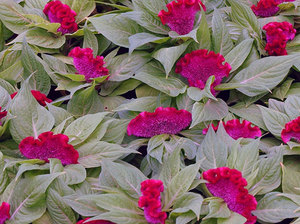 When to plant seedlings... Before sowing, the seed material needs preliminary preparation: in order for the dense shell of the seeds to get wet as soon as possible, they must be kept in a solution of zircon and epin (1 drop / st. Water) for 3-4 hours. The optimal time for planting is March - early April.
When to plant seedlings... Before sowing, the seed material needs preliminary preparation: in order for the dense shell of the seeds to get wet as soon as possible, they must be kept in a solution of zircon and epin (1 drop / st. Water) for 3-4 hours. The optimal time for planting is March - early April.
The seeds must be sown at a distance of 3 cm from each other. Since the seeds are very small (in 1 gr. - about 800 pieces), they do not need to be planted in the ground. The planting material scattered on the surface of the wet soil is covered with a film and placed on the windowsill at a temperature of 23-25 C.
So that your efforts are not in vain, you must strictly follow the rules for caring for seedlings, in particular, to ensure that they are protected from direct sunlight. An ordinary newspaper is suitable for this.
The film can be removed one week after germination.
Growing seedlings of celosia... Since the daylight hours are still too short at this time of the year, additional illumination should be provided for seedlings for 4-6 hours. Group sowing of seeds assumes double picking of seedlings:
- After the appearance of 2-3 true leaves, the seedlings are planted at a distance of 5 cm from each other to a depth of 4-5 cm, the composition of the soil is the same. When the transplanted seedlings take root in a new place, they must be fed with a complex mineral fertilizer for flowering plants, while the solution must be weakly concentrated. It is better to do this at the same time as watering.
- After the seedlings get stronger, a second pick is carried out into a deeper container with a peat-humus substrate. It is better to use individual pots, this will help in the future to painlessly transplant the cellosis without damaging the root system. As soon as the plant takes root, you can repeat the feeding.
Celosi planting
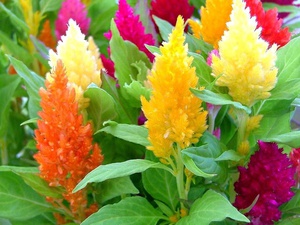 When choosing a place for landing, it should be borne in mind that celosia prefers the most protected from the wind and sunny areas with weakly acidic, loose soil. If the soil in your garden is heavy, you should add a small amount of sand to make it loose. Regardless of the composition of the soil, it is recommended to add a little humus before planting cellosia.
When choosing a place for landing, it should be borne in mind that celosia prefers the most protected from the wind and sunny areas with weakly acidic, loose soil. If the soil in your garden is heavy, you should add a small amount of sand to make it loose. Regardless of the composition of the soil, it is recommended to add a little humus before planting cellosia.
Don't bring in fresh organic matter - celosia does not tolerate it.
Remember! Even small frosts are destructive for young plants! Therefore, it is possible to plant seedlings in the ground only after the final onset of heat (early June).
How to plant celosia... Plants are planted in a traditional way for all horticultural crops. Young plants are still very fragile, so you need to transplant them carefully. It is better to use the transshipment method so as not to damage the root system. If you sowed or dived seedlings of cellosia into peat-humus pots, plant the plant in the ground right with them.
It should only be taken into account that the distance between seedlings of tall species is 25-30 cm, dwarf ones - 15-20 cm.
Growing and caring for a plant
After planting in open ground, the flower needs certain care - watering and feeding. Since the seedlings of celosia do not tolerate drying out of the soil, it is necessary to constantly keep the soil moist. Watering is necessary exclusively in the morning and quite often. But (!) Do not allow excessive soil moisture, as this can lead to root rot.
For feeding, complex mineral fertilizers are used, which should be applied every 3 weeks (for 5 liters of water - 15 grams of fertilizer). Don't overdo it with nitrogen, or you will end up with wild foliage but not blooming.
Celosia is very difficult to tolerate a lack of moisture and stops the formation of peduncles. On hot days, the plant must be watered abundantly.
Finally, don't forget remove weeds in time and loosen the soil. That is, in principle, all the wisdom of caring for the whole.
Diseases and pests
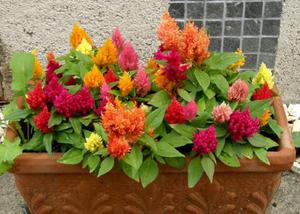 The main enemy of cellosis at a young age is the blackfoot. The disease occurs due to excessive moisture in the soil. If you notice that the base of the stem has turned black, you need to temporarily suspend watering, loosen the soil and sprinkle it with a thin layer of wood ash.
The main enemy of cellosis at a young age is the blackfoot. The disease occurs due to excessive moisture in the soil. If you notice that the base of the stem has turned black, you need to temporarily suspend watering, loosen the soil and sprinkle it with a thin layer of wood ash.
Sometimes aphids are affected by cellosis. To combat it, prepare a solution of vegetable oil (1 tbsp.), Liquid soap (2 tbsp.) And water (2 tbsp.) And spray the plant. Processing should be carried out in the evenings every few days. Cellosis is resistant to all other diseases and pests.
Types of cellosis and photos
By the shape of the flowers of celosia is subdivided into three main groups: pinnate, comb and spikelet. But the most popular among gardeners are the first two types.
Celosia cristate silvery
It is a beautiful perennial, whose height reaches 65 cm. It is grown mainly as an annual crop.
The flowers of the plant are small, very bright and juicy, collected in massive inflorescences, along the upper edge of which there is a series of convolutions. The shape of the inflorescence resembles a scallop, therefore, the cockscomb is called the comb.
Celosia comb flowers are amazing not so much for their original shape as unusually bright color, their color can be pink, orange, purplish red, scarlet and yellow. Not a single garden flower can boast of such an extraordinary and expressive "outfit", therefore, the view of a flowerbed with a comb-like plant causes genuine admiration among passers-by.
Celosia comb is valued by gardeners not only for its bright exotic look, but also for its rather long flowering, which lasts from early July to October. The plant does not lose its decorative effect even after it fades. Its leaves, depending on the variety, shine with purple, burgundy, red, bronze, bright green and even golden color.
- "Impress". This variety of Celosia comb has gained great popularity among gardeners in central Russia. The plant has dark purple leaves and bright burgundy inflorescences.
- Imperialis. Also no less popular, dwarf (only 25 cm high) variety of crested comb. This is a plant with bright purple leaves, as if divided into parts by thin red veins. Purple inflorescences are located on beautiful burgundy shoots.
- "Atropurpuria". The plants are very large, with a pale pink stem and purple-red inflorescences. The leaves are light green, extraordinarily beautiful.
Celosia plumose silvery
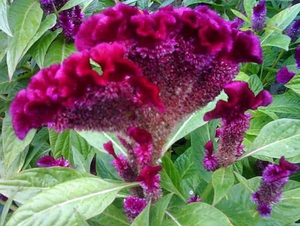 This is the second most popular type of annuals, the height of which reaches one meter... The plant is distinguished by lush flowering, which lasts for many months, up to frost, it is noteworthy that throughout this period the decorativeness of silver feathery celosia is not lost. Groups of plants of various varieties of celosia pinnate form a small bush with a large number of bright paniculate inflorescences, approximately 1/3 of the total plant height.
This is the second most popular type of annuals, the height of which reaches one meter... The plant is distinguished by lush flowering, which lasts for many months, up to frost, it is noteworthy that throughout this period the decorativeness of silver feathery celosia is not lost. Groups of plants of various varieties of celosia pinnate form a small bush with a large number of bright paniculate inflorescences, approximately 1/3 of the total plant height.
Among the variety of varieties, dwarf varieties stand out - no higher than 30 cm, medium-sized ones - up to 50 cm and tall ones - up to 100 cm.
- Golden Flitz. Quite a popular variety of feathery celosia, 80 cm high with golden-orange inflorescences.
- Feuerfeder. It is a small plant (only 35 cm) with light green leaves with pink veins and bright red inflorescences.
Celosia is spicate, for some reason it is not very popular with gardeners. Its inflorescences are similar in appearance to wheat - hence the name.
Celosia spicate
The plant has slender bright inflorescences, up to 1.3 m high, of various colors - from pale yellow to bright red.
It is interesting that celosia, in addition to its decorative qualities, also has healing properties... Infusions and decoctions of the plant are actively used in folk medicine. It is believed that the plant can cope with many diseases of an inflammatory nature.
Such a wonderful beauty can be a decoration for your balcony or garden plot. If you buy seeds of different colors and show a little imagination, you can create a unique mixborder or flower bed.
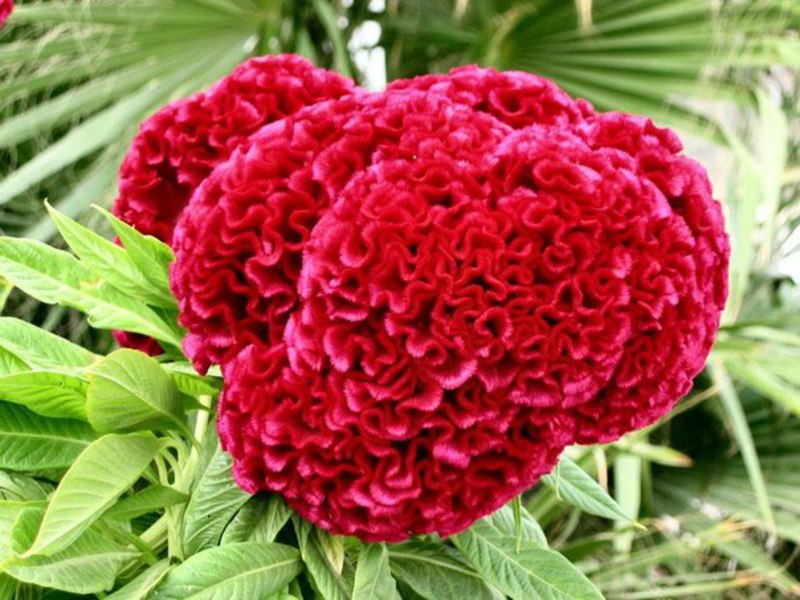

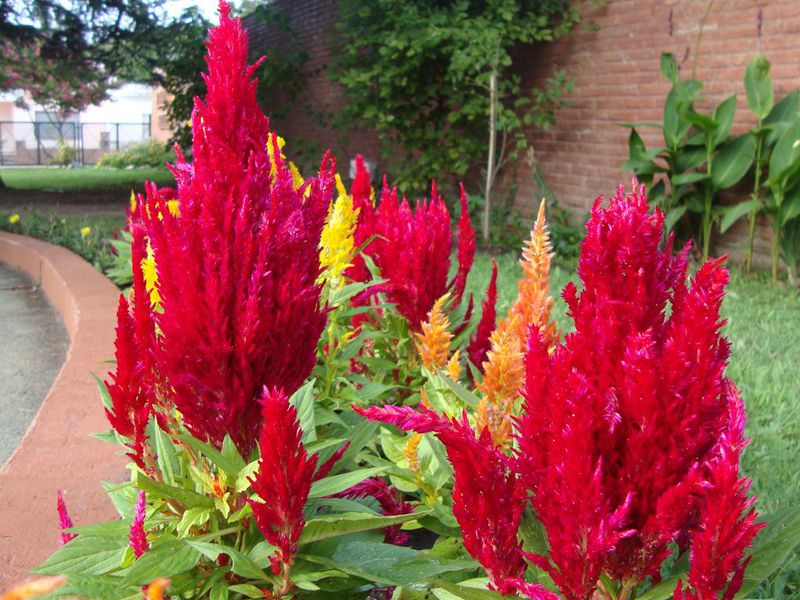
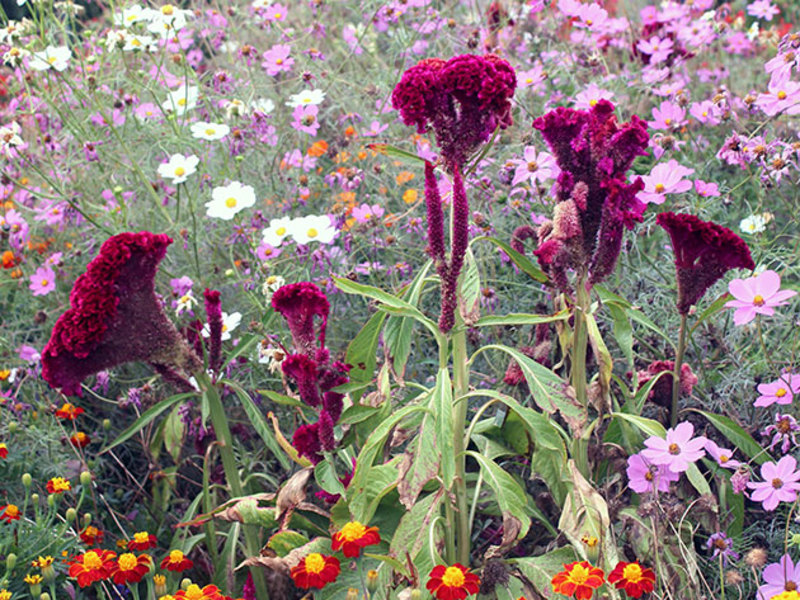
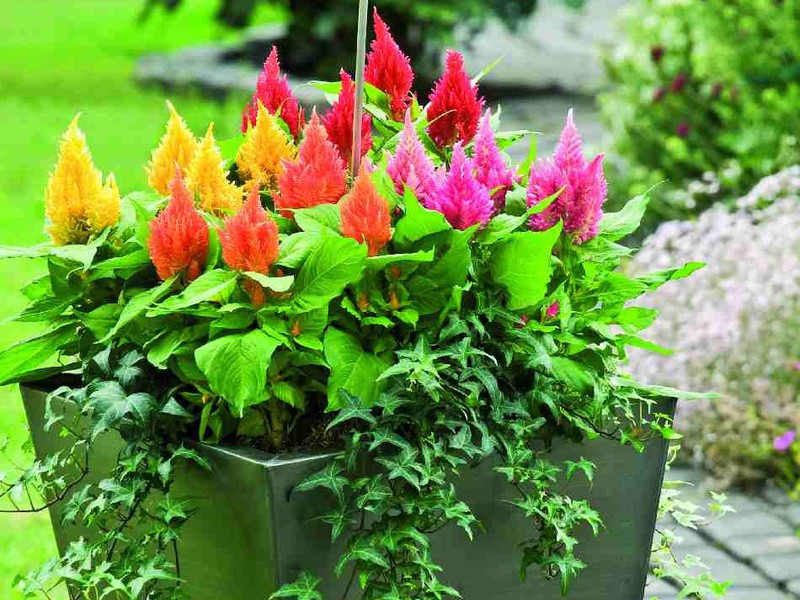
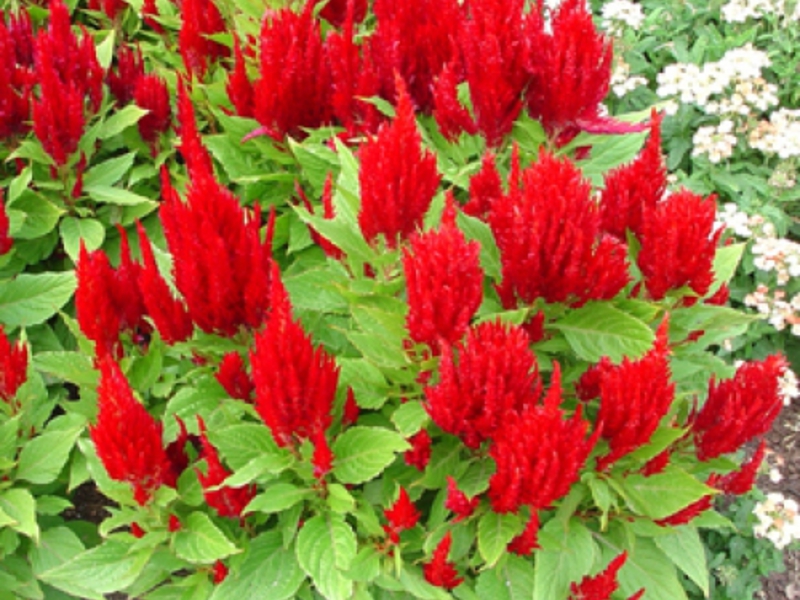
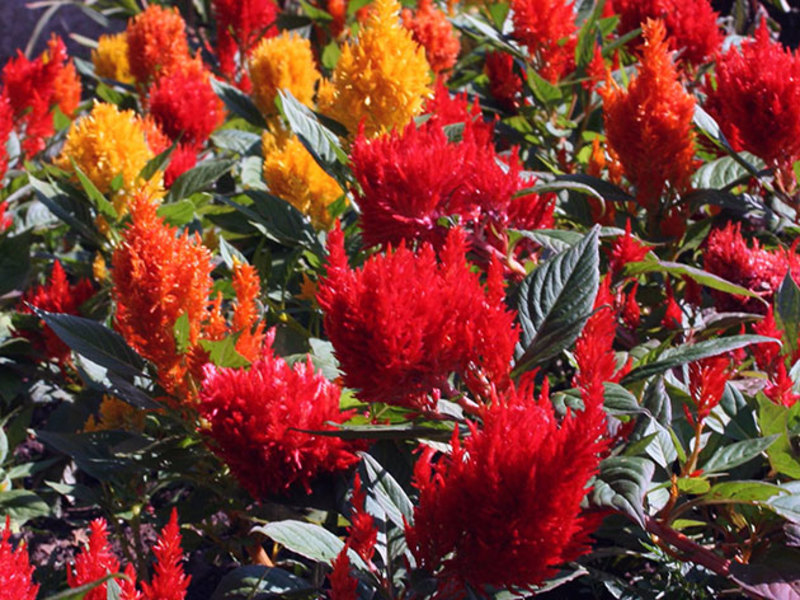
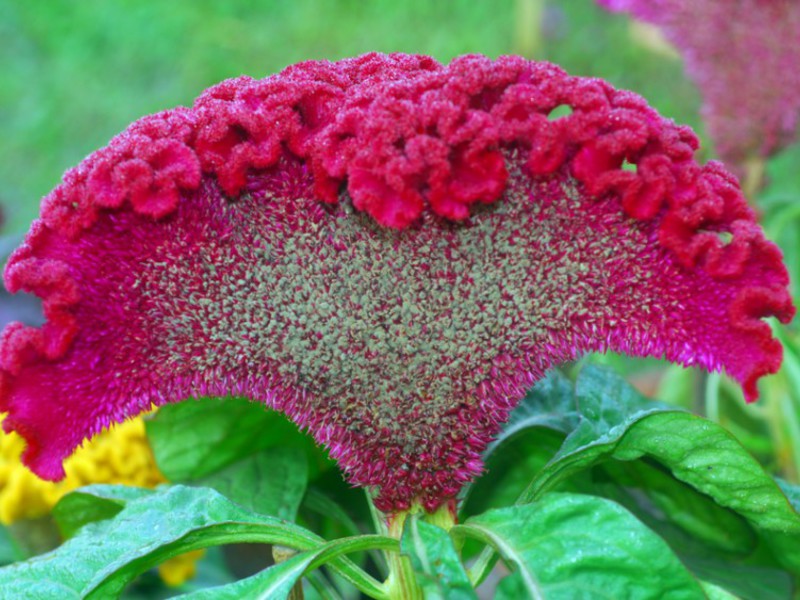
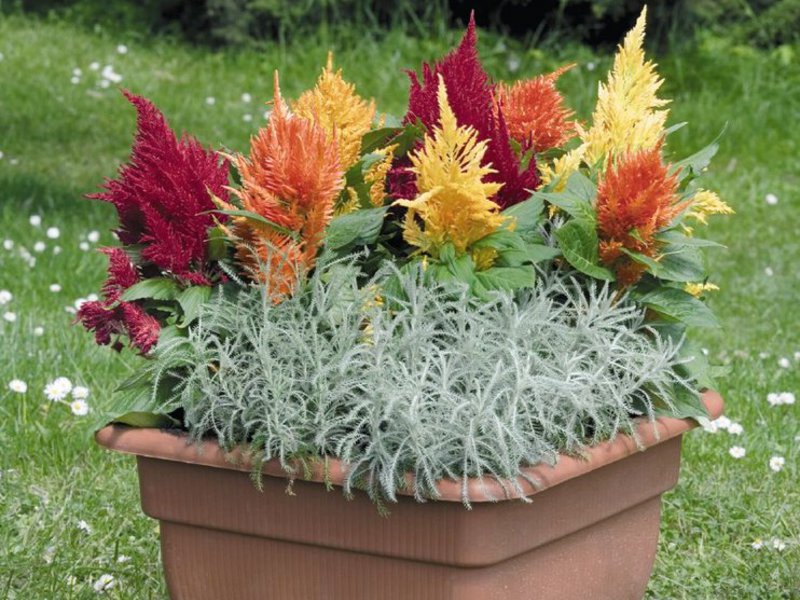

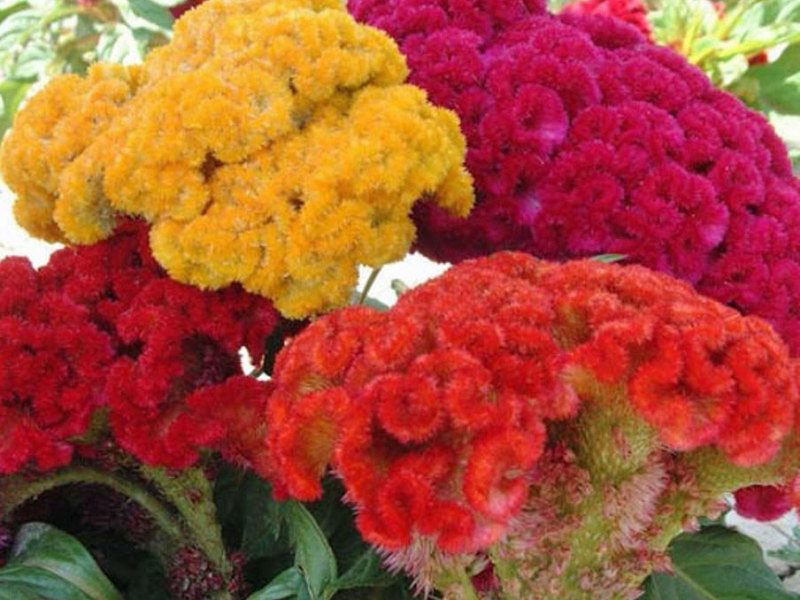
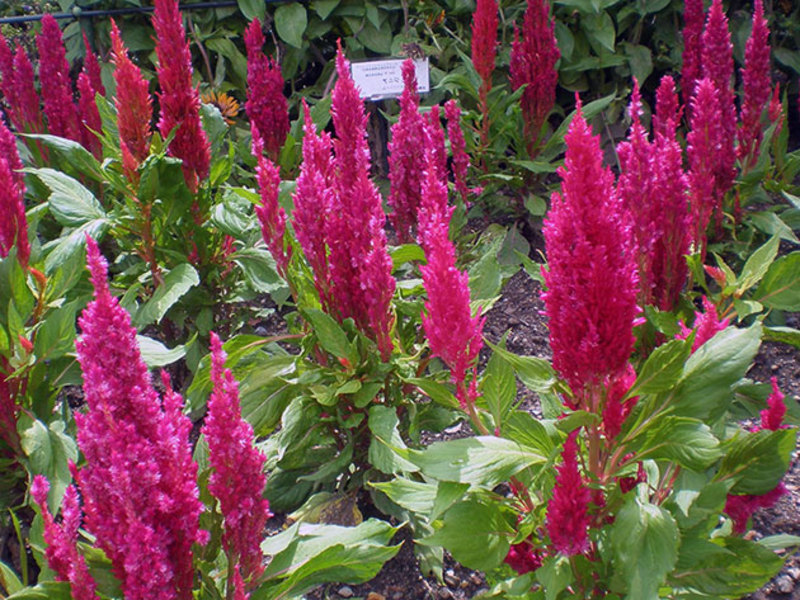
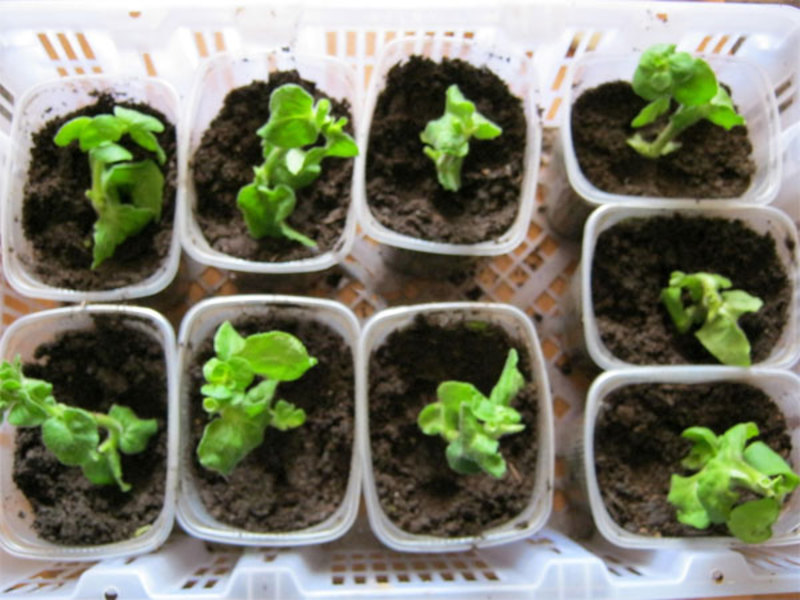
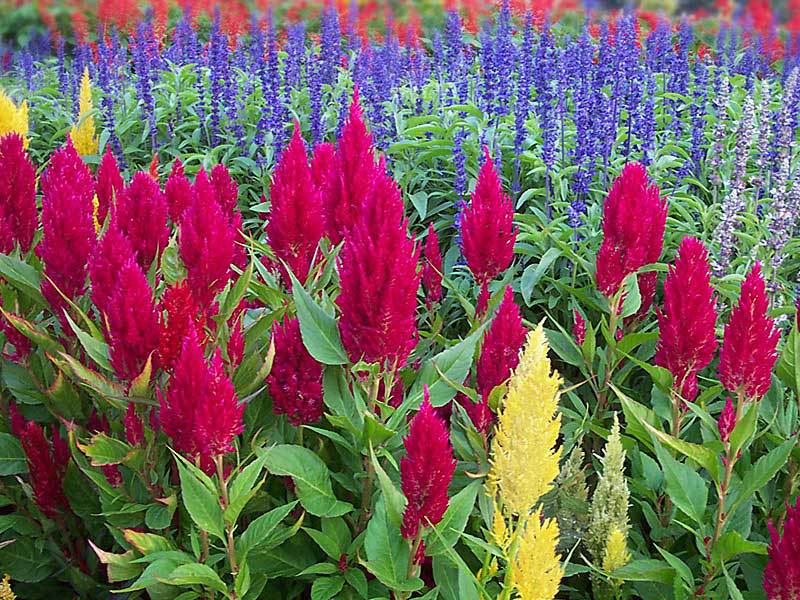
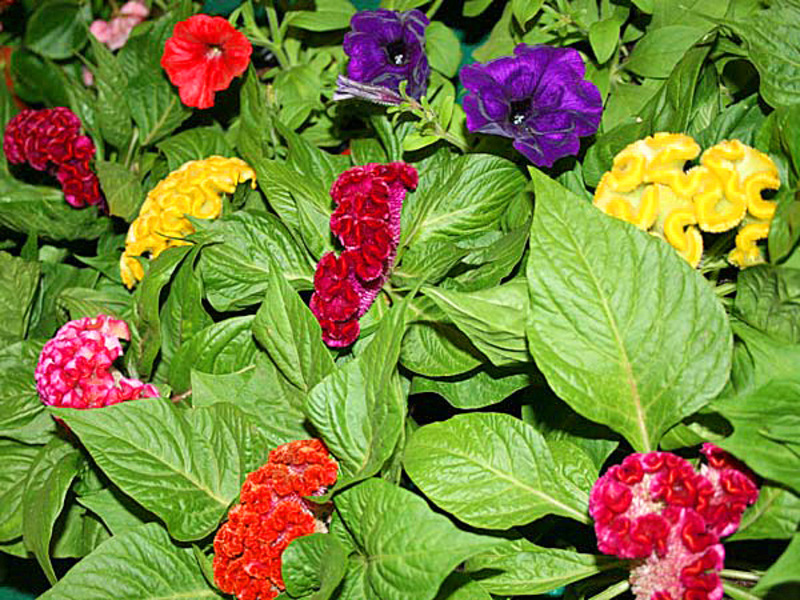

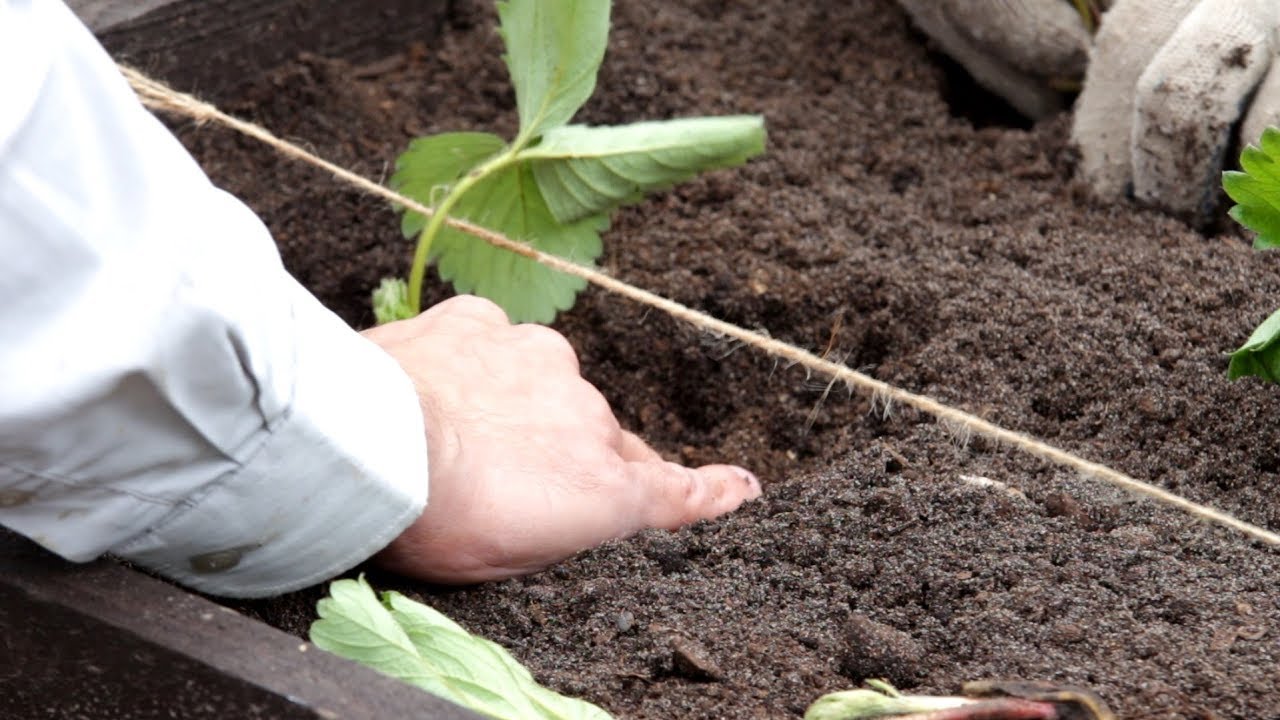

1 comment